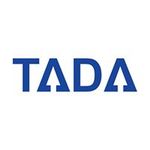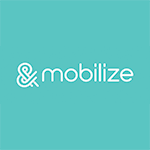Description

aMember Pro

TADA
Comprehensive Overview: aMember Pro vs TADA
Here's a comprehensive overview of aMember Pro and TADA, including their primary functions, target markets, market share, user base, and key differentiating factors:
aMember Pro
a) Primary Functions and Target Markets
- Primary Functions: aMember Pro is a powerful membership management software primarily designed to handle membership subscriptions, content protection, and manage access to digital content. It facilitates subscription payments, user registration, and integrates with numerous payment gateways to automate billing processes. Additionally, it provides features for email marketing, affiliate management, and analytics.
- Target Markets: aMember Pro is aimed at businesses, educators, fitness trainers, and any entity or individual looking to establish a membership site or handle paid content distribution. This includes online courses, digital publishers, and software as a service (SaaS) platforms that require sophisticated automation for member management.
b) Market Share and User Base
- Market Share: aMember Pro has a niche market share, primarily serving small to medium-sized businesses that need a more flexible and customizable membership management solution.
- User Base: Its user base consists of those in the e-learning industry, digital content creators, and SMBs focusing on subscription-based access to services or content.
c) Key Differentiating Factors
- Extensive customization options, allowing for tailored membership sites.
- Robust integration capabilities with various third-party services and software.
- Lifetime license for self-hosted plans, which is cost-effective in the long term for businesses that prefer this kind of model.
- Advanced content protection functionalities.
TADA
a) Primary Functions and Target Markets
- Primary Functions: TADA specializes in customer retention and loyalty solutions. It helps businesses create and manage loyalty programs, enhancing customer engagement through rewards, promotions, and personalized marketing efforts. It provides insights into customer behavior, enabling businesses to optimize their marketing strategies.
- Target Markets: TADA primarily targets retail businesses, online stores, and service industries that aim to boost customer loyalty and drive repeat business. This includes restaurants, supermarkets, and multi-channel retailers looking to strengthen customer relationships and brand loyalty.
b) Market Share and User Base
- Market Share: TADA is more prominent in markets that prioritize customer engagement and retention strategies, particularly in the retail and F&B sectors.
- User Base: The user base mainly consists of retail outlets, e-commerce providers, and other B2C industries focused on building and maintaining a loyal customer base through structured loyalty programs.
c) Key Differentiating Factors
- Strong focus on customer loyalty and reward system management.
- Tools designed to boost customer engagement and reduce churn rates.
- Data-driven insights for personalized marketing and customer experience optimization.
- Seamless integration with existing CRM and POS systems to streamline operations.
Comparison Summary
When comparing aMember Pro and TADA, it's clear that they cater to different needs despite both playing roles in the broader area of customer and membership management. aMember Pro is more oriented towards managing digital memberships and subscriptions, providing deep integration and customization for content providers. In contrast, TADA focuses on enhancing customer loyalty and engagement within the retail space through targeted rewards and personalization strategies. Each has its strengths, which are primarily aligned with the specific needs of their target markets.
Contact Info

Year founded :
Not Available
Not Available
Not Available
Not Available
Not Available

Year founded :
2019
Not Available
Not Available
El Salvador
Not Available
Feature Similarity Breakdown: aMember Pro, TADA
To provide a detailed feature similarity breakdown between aMember Pro and TADA, we'll examine their common features, user interface comparisons, and highlight any unique features.
a) Core Features in Common
Both aMember Pro and TADA are designed to manage memberships, though they cater to different scales and have unique focuses. Here are some core features they typically share:
-
Membership Management: Both platforms offer tools to manage user subscriptions, track membership status, and automate renewals.
-
Payment Processing: They support integration with multiple payment gateways, allowing secure transactions and recurring billing.
-
Customization Options: Each platform offers customization capabilities, enabling users to tailor their sites and forms to fit their branding and functional needs.
-
Reporting and Analytics: Both solutions provide reporting features to help users understand membership trends, financial performance, and user engagement.
-
User Access Management: They enable the restriction of content based on user roles or membership levels, ensuring only paying or authorized members access specific content.
b) User Interface Comparisons
aMember Pro:
-
User Interface: Typically features a standard but somewhat outdated design focused on functionality. It offers a dashboard with easy access to different management tools but can involve a learning curve due to its extensive customization options.
-
Customization & Design: Offers robust flexibility with its templates and themes, though they might appeal more to users with some technical expertise.
TADA:
-
User Interface: Focused on simplicity and ease of use. TADA often emphasizes user experience with clean, modern interface designs that require minimal technical skills to navigate.
-
Customization & Design: Prioritizes plug-and-play features, allowing for quick set-up and execution, which might be more intuitive for non-technical users compared to aMember Pro.
c) Unique Features
aMember Pro:
-
Integration Capabilities: Offers extensive integrations with a variety of third-party tools and platforms, such as CRMs, email marketing tools, and forum software, making it highly versatile for businesses with diverse needs.
-
E-commerce Functionality: It provides more robust e-commerce features, including a product and subscription management system that can support complex pricing models.
-
Advanced User Management: Includes features for comprehensive user segmentation and engagement tracking, suitable for larger organizations with diverse audience segments.
TADA:
-
Gamification Elements: TADA may incorporate gamification features to enhance member engagement, utilizing points, rewards, and challenges to motivate participation.
-
Community Building Tools: Often stronger community engagement tools such as forums or social feeds, which can be a strong draw for organizations focusing on robust community interaction.
-
Mobile Accessibility: Typically offers more advanced mobile optimization, ensuring that user experiences remain smooth across devices without additional setup.
In conclusion, while aMember Pro and TADA share core functionalities essential for membership management, they diverge in their approach and specialized features. aMember Pro leans towards a highly customizable, feature-rich environment suitable for larger or more complex organizations, while TADA excels in user-friendly, community-oriented designs.
Features

Not Available

Not Available
Best Fit Use Cases: aMember Pro, TADA
a) aMember Pro:
-
Membership-Based Websites and Online Communities: aMember Pro is highly suitable for businesses or projects that primarily run membership-based services. This includes subscription services for content like e-books, videos, tutorials, or any form of digital media. Educational platforms offering courses can also benefit significantly from its features.
-
Recurring Payment Management: Businesses that require efficient management of recurring billing and subscriptions, like subscription boxes or software-as-a-service (SaaS) providers, will find aMember Pro advantageous.
-
Affiliate Program Integration: Companies looking to integrate affiliate marketing programs seamlessly might prefer aMember Pro due to its robust affiliate management system.
-
Digital Product Sellers: Enterprises selling digital products like software, e-books, or digital art can use aMember Pro for managing downloads, payments, and user access.
b) TADA:
-
Loyalty and Reward Programs: TADA is an ideal choice for businesses looking to implement loyalty programs. This includes retail stores, restaurants, or e-commerce businesses seeking to enhance customer retention and engagement.
-
Customer Engagement Initiatives: Companies focusing on increasing customer interaction through gamification or engagement rewards might find TADA's features aligned with their goals.
-
Small to Medium Enterprises (SMEs): Businesses in various sectors, such as cafes, fitness centers, or beauty salons, looking for cost-effective customer loyalty solutions can benefit from TADA.
-
Multi-channel and Omni-channel Retailers: Businesses that operate across several sales channels and wish to unify their loyalty program across platforms might see TADA as ideal.
d) Industry Verticals and Company Sizes:
-
aMember Pro is versatile and caters primarily to digital content businesses, e-learning platforms, and any industry focusing on memberships and subscriptions. Its scalability makes it suitable for both small and large enterprises, providing extensive customization to suit specific business needs.
-
TADA, on the other hand, is somewhat tailored toward customer-facing businesses needing loyalty solutions. While it can be an excellent fit for SMEs due to its ease of implementation and cost-effectiveness, larger enterprises can also adapt it for complex loyalty and engagement setups, especially in retail, hospitality, and service industries.
Both products cater to different niches and address specific business challenges, with aMember Pro emphasizing subscription management and digital services, while TADA focuses on enhancing customer loyalty and engagement in the retail and service sectors.
Pricing

Pricing Not Available

Pricing Not Available
Metrics History
Metrics History
Comparing undefined across companies
Conclusion & Final Verdict: aMember Pro vs TADA
When comparing aMember Pro and TADA for overall value and usability, it’s essential to weigh various factors that might influence the decision based on individual and business needs.
a) Best Overall Value
The best overall value depends largely on the specific needs of the user. If membership management with extensive integration options, flexibility, and scalability is the primary goal, aMember Pro offers more robust features tailored to these requirements. On the other hand, if the priority is customer engagement and boosting loyalty through gamification and incentives, TADA presents a valuable offering.
b) Pros and Cons
aMember Pro:
Pros:
- Comprehensive Membership Management: Offers extensive tools for creating and managing membership sites.
- Integration Support: Works well with numerous third-party platforms and payment gateways.
- Flexibility: Highly customizable, suitable for a range of use cases from small blogs to large enterprises.
Cons:
- Complexity: Might be overwhelming for users without technical expertise due to the depth of features.
- Cost: Initial setup and maintenance may be costlier than simpler solutions.
TADA:
Pros:
- User Engagement: Specializes in enhancing customer engagement through gamification and rewards.
- Ease of Use: Generally easier to set up and use, especially for businesses focusing on loyalty programs.
- Cost-effective Plans: Attractive pricing for businesses primarily interested in loyalty solutions.
Cons:
- Limited Membership Features: Not as robust in membership management functions compared to aMember Pro.
- Niche Focus: Primarily focused on loyalty and engagement rather than comprehensive site management.
c) Recommendations
-
For Membership Sites: If the focus is on building and managing a membership site with diverse content access and payment options, aMember Pro is recommended. It's particularly suitable for users who require detailed control and flexibility over their membership ecosystems.
-
For Customer Engagement and Loyalty Programs: TADA is ideal for businesses aiming to enhance customer retention through loyalty programs and gamification techniques. It's a better fit for businesses that do not need extensive membership management features.
-
Ease of Use vs. Feature Richness: Users needing a straightforward solution with easy setup might prefer TADA. In contrast, those who don�’t mind a steeper learning curve for a more feature-rich solution might find aMember Pro a better choice.
Ultimately, the decision between aMember Pro and TADA should consider specific business needs, technical expertise available, budget constraints, and long-term goals regarding membership or customer engagement strategies.
Add to compare
Add similar companies




